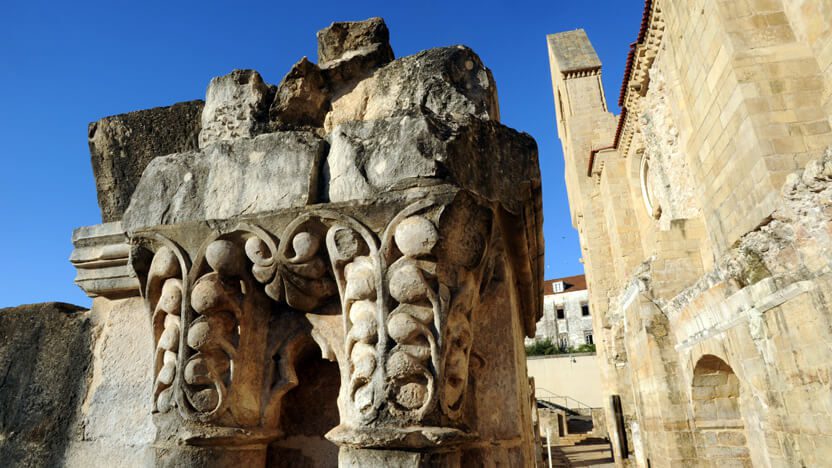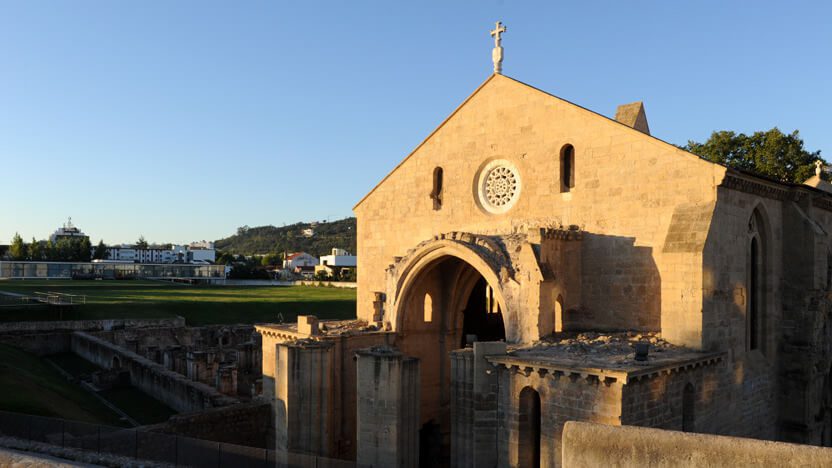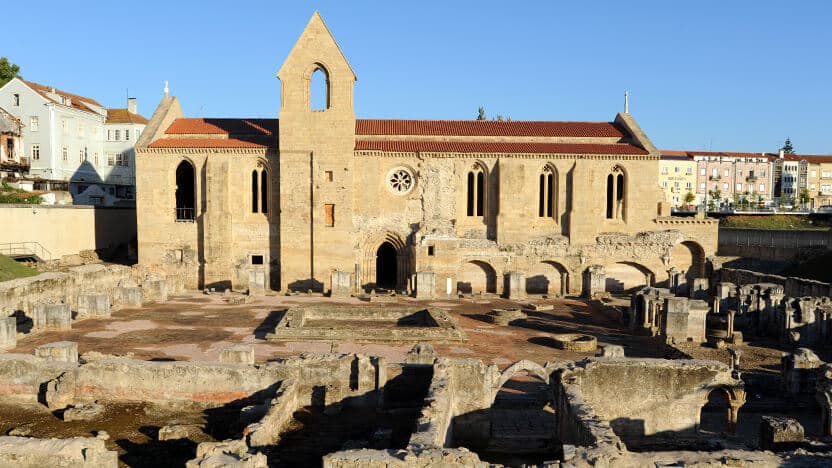Closely connected with the figure of Saint Elizabeth of Portugal, the Santa Clara a Velha Monastery had difficulties early on because of its closeness to the Mondego River. Its living conditions worsened throughout time because of continual floods, which led King John IV to order the construction of a new monastery called Santa Clara a Nova (New Saint Clair). Recently, recovery works were carried out in the building led to the discovery of many archaeological traces. Because of this finding, this national monument now has its own interpretative centre which has revitalized the space and its History.
The Creation of the Santa Clara Convent
The first building of the monastery was founded by Dona Mor Dias in 1286, but the Santa Cruz monks opposed to the existence of a new feminine monastic house and so the community was closed a few years later. However, in 1314, Elizabeth of Aragon reopened the monastic house and the Poor Claire nuns returned to Coimbra. The old structure which still exists today was a part of the great undertaking sponsored by the Saint Queen.
Built on the left bank of the Mondego River, the Santa Clara Monastery was always a victim of recurrent water invasions. Floods determined the timing of the construction and the price of the monastery rose progressively even leading to the construction of another floor. Over the next centuries, the life of the nuns was conditioned to the behaviour of the river and, finally, in 1677, the community left the space in order to occupy the building of the Santa Clara a Nova Monastery, which was built by order of King John IV in the opposite bank of the Mondego River.
Recovering the Monastery
Although it underwent recovery works in 1930, the determination of the Mondego River waters kept the old monastery in ruins and surrounded by a certain romantic aura. However, in 1991, an ambitious recovery and revaluation project for the gothic monastic space was started under the coordination of the archaeologist Artur Côrte-Real. Thanks to the construction of a peripheral water containment curtain, the intervention allowed workers to uncover the lower part of the church and the cloister and gather a very important collection which is a material evidence of its past.
The Santa Clara-a-Velha Interpretative Centre
After 17 years of hard study and recovery work, the Santa Clara a Velha Monastery reopened in 2009 and was included into an interpretive centre, designed by the architects Alexandre Alves and Sérgio Fernandez. This building which is also a museum has an auditorium, exhibition rooms, a shop and a coffee shop and provides several cultural events from auteur films to the exhibition of objects from the monastery’s collection, recovered in the excavations which can recreate the monument and its History. Nowadays, visitors can enjoy not only a visit to the ruins of unquestionable architectonical and artist value, but also reconstruct the everyday life of the Poor Clair nuns. Santa Clara a Velha is, unquestionably, a monument of which the city of Coimbra can be proud of.
Opening Hours
From Tuesday to Sunday
Summer schedule: from April 1st to October 14th: 10:00-19:00 (last entrance at 18:15)
Winter schedule: October 15th to March 31st: 09:00 – 17:00 (last entrance at 16:30)





















